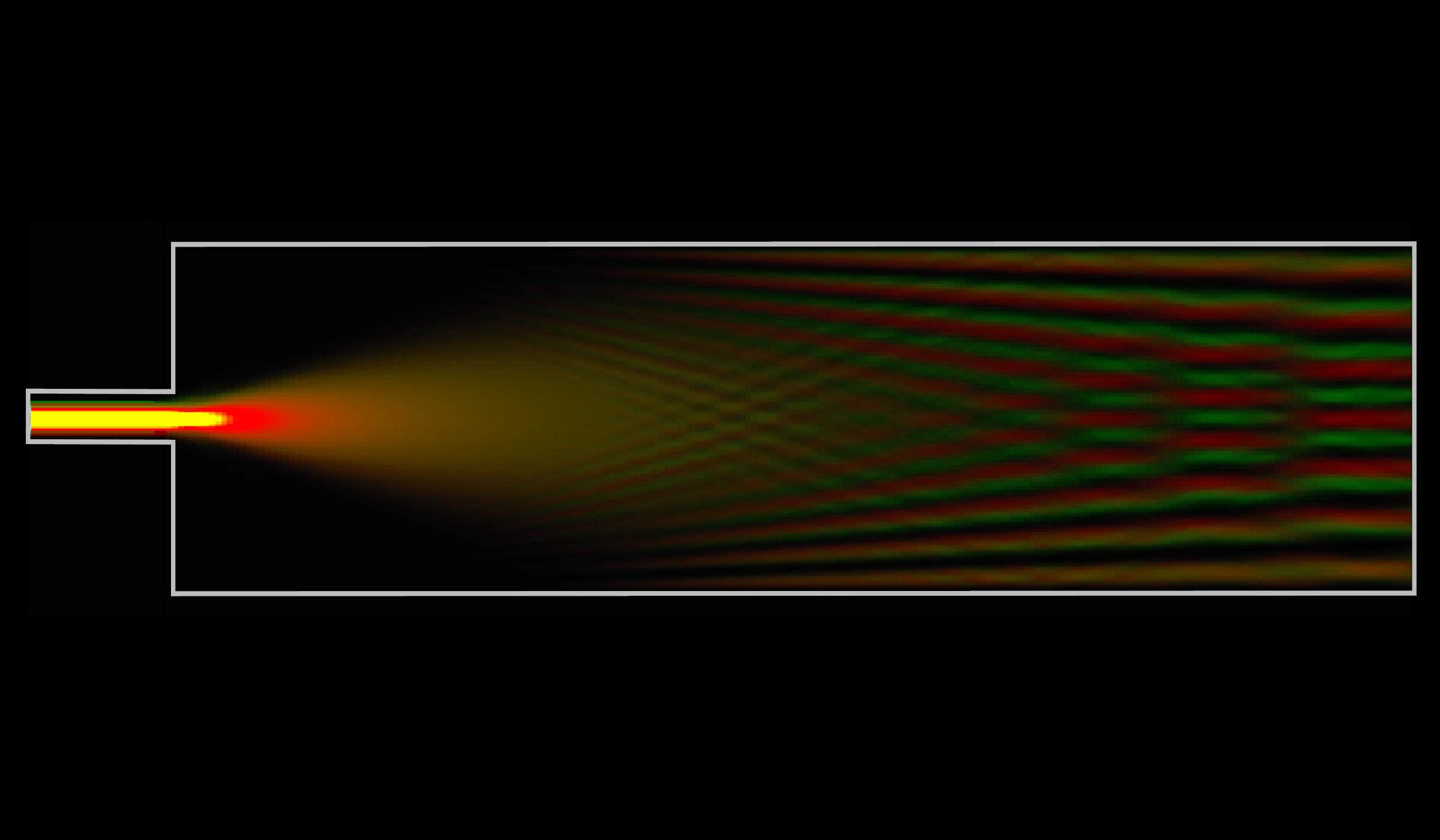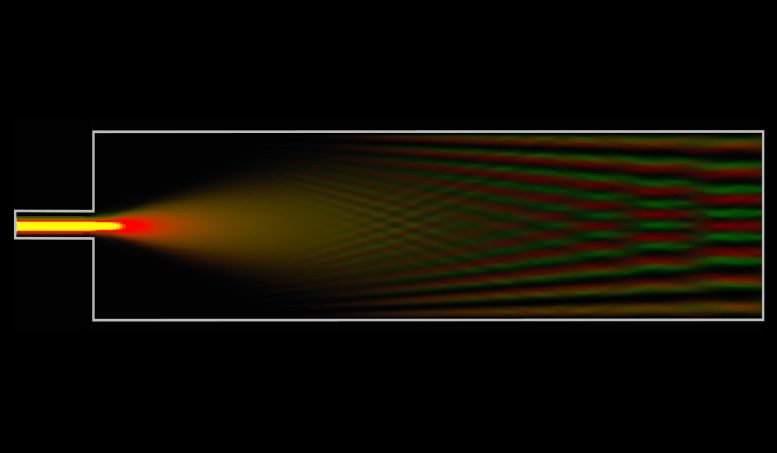

A new miniature spectrometer combines cutting-edge technology with affordability, offering high precision in fields such as astronomy and health diagnostics.
This device promises to bring complex spectral analysis into more frequent use by reducing size and cost, without sacrificing performance.
Spectrometers, tools for analyzing light, have been around since the time of 17th-century physicist Isaac Newton. They function by splitting light waves into their various colors, or spectra, to reveal details about the composition of the objects being studied.
At UC Santa Cruz, researchers are developing ultra-small yet powerful spectrometers for a wide range of uses, from detecting diseases to studying distant galaxies. These devices are not only compact but also affordable to produce, making them accessible and customizable for specific needs.
High-Performance Mini Spectrometers
The interdisciplinary research team, led by UC Santa Cruz Professors Holger Schmidt (Electrical and Computer Engineering) and Kevin Bundy (Astronomy and Astrophysics), recently published their findings in APL Photonics, a leading journal in the field.
The researchers demonstrate a novel, extremely high-performance spectrometer that can measure light with a 0.05 nanometers wavelength resolution. That’s about 1.6 million times smaller than the width of a human hair, and the same resolution that can be achieved on a device 1,000 times bigger.
“That’s essentially as good as a big, standard, expensive spectrometer,” said Schmidt, the senior author on the paper and a long-time expert in developing chips for light detection. “That’s really pretty impressive and very competitive.”
Advantages of Miniaturization
Miniaturizing spectrometers is an active area of research, as spectrometers are used in many fields but can be as big as a three-story building and extremely expensive. However, miniaturized spectrometers often do not perform as well as bigger instruments, or they are very difficult and expensive to manufacture because they require extremely precise nanofabrication.
UC Santa Cruz researchers have created a device that can achieve high performance without such costly manufacturing. Their device is a miniature, high-powered waveguide that is mounted on a chip and used to guide light into a specific pattern, depending on its color.
Information from the chip is fed into a machine learning algorithm that reads the patterns created by different wavelengths of light in order to reconstruct the image with extremely high accuracy and precision — an approach is called “reconstructive” spectrometry.
This technique produces accurate results because the machine learning algorithms don’t require highly precise input to be able to distinguish the light patterns, and can constantly improve upon their own performance and optimize themselves to the hardware.
Because of this, the researchers can make the chips with relatively easy and inexpensive fabrication techniques, in a process that takes hours rather than weeks. The lightweight, compact chips for this project were designed at UCSC, and fabricated and optimized at Brigham Young University in partnership with Schmidt’s longtime collaborator Professor Aaron Hawkins and his undergraduate students.
“Compared to more sophisticated chip design, this only requires one photolithography mask which makes the fabrication much easier and much faster,” Hawkins said. “Someone with some basic capabilities could reproduce this and create a similar device tuned to their own needs.”
Astronomical Applications
The researchers envision that this technology can be used for a wide range of applications, though their preliminary focus is to create powerful instruments for astronomy research. Because their devices are relatively inexpensive, astronomers could specialize them to their specific research interests, which is practically impossible on much larger instruments that cost millions of dollars.
The research team is working to make the chips functional on the UC-operated Lick Observatory telescope, first to take in light from a star and later to study other astrological events. With such high accuracy on these devices, astronomers could start to understand phenomena such as the makeup of atmospheres on exoplanets, or probing the nature of dark matter in faint dwarf galaxies. The comparatively low cost of these devices would make it easier for scientists to optimize them for their specific research interests, something nearly impossible on traditional devices.
Leveraging long-standing expertise at UC Santa Cruz in adaptive optics systems for astronomy, the researchers are collaborating to figure out how to best capture the faint glimmers of light from distant stars and galaxies and feed it through into the miniaturized spectrometer.
“In astronomy, when you try to put something on a telescope and get light through it, you always discover new challenges — it’s much harder than just doing it in the lab. The beauty of this collaboration is that we actually have a telescope, and we can try deploying these devices on the telescope with a good adaptive optics system,” Bundy said.
Potential in Health and Environmental Sciences
Beyond astronomy, the research team shows in this paper that the tool is capable of fluorescence detection, which is a noninvasive imaging technique used for many medical applications, such as cancer screening and infectious disease detection.
In the future, they plan to develop the technology for Raman scattering analysis. This is a technique that uses light scattering for the detection of any unique molecule, often used as a specialized test to look for a specific chemical substance, such as the presence of drugs in the human body or toxic pollutants in the environment. Because the system is so straightforward and does not require the use of heavy instrumentation or fluidics like other techniques, it would be convenient and robust for use in the field.
Future Directions and Enhancements
The researchers also demonstrate that the compact waveguides can be placed alongside each other to enhance the performance of the system, as each chip can measure different spectra and provide more information about whatever light it is observing. In the paper, the researchers demonstrate the power of four waveguides working together, but Schmidt envisions that hundreds of chips could be used at once.
This is the first device shown to be able to use multiple chips at once in this way. The researchers will continue to work to improve the sensitivity of the device to get even higher spectral resolution.
Reference: “Multi-mode interference waveguide chip-scale spectrometer (invited)” by Md Nafiz Amin, Vahid Ganjalizadeh, Tyler J. Adams; Porter B. Dixon, Zoe Weber, Matthew DeMartino, Kevin Bundy, Aaron R. Hawkins and Holger Schmidt, 4 October 2024, APL Photonics.
DOI: 10.1063/5.0222100